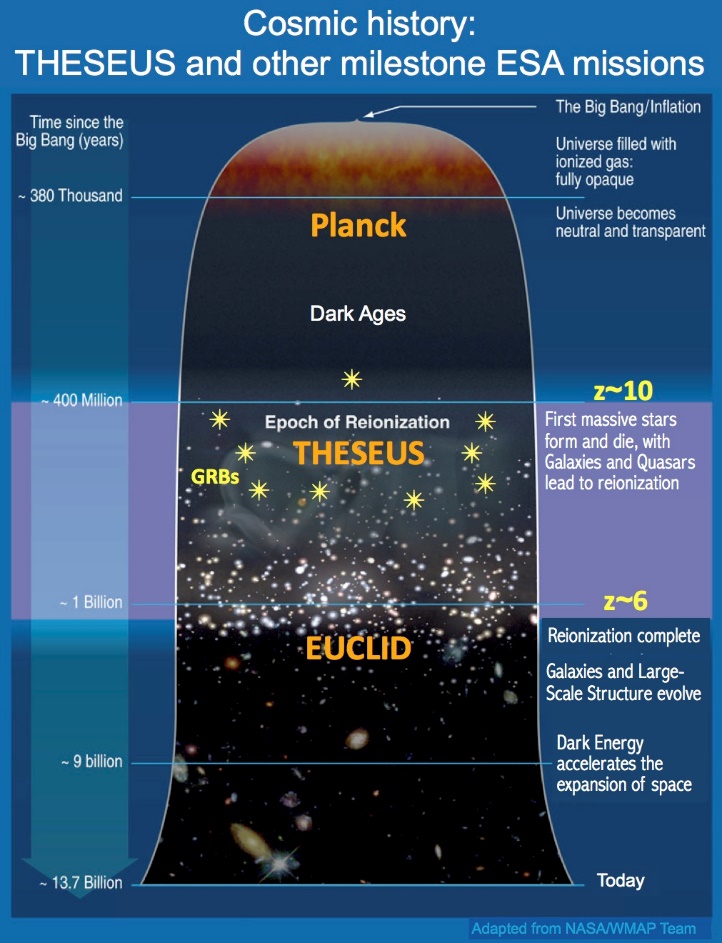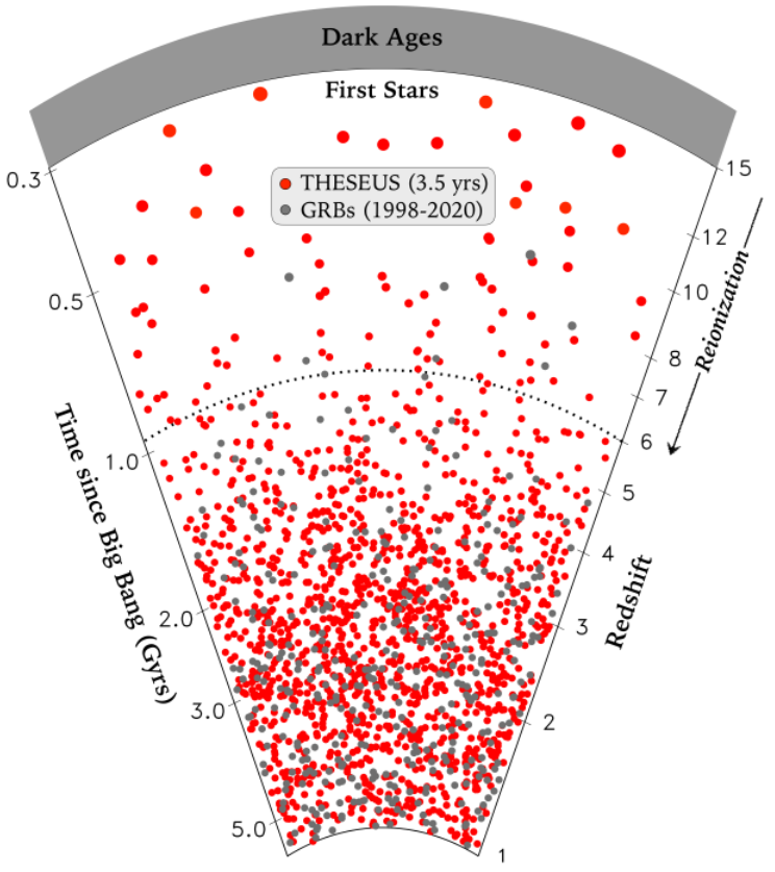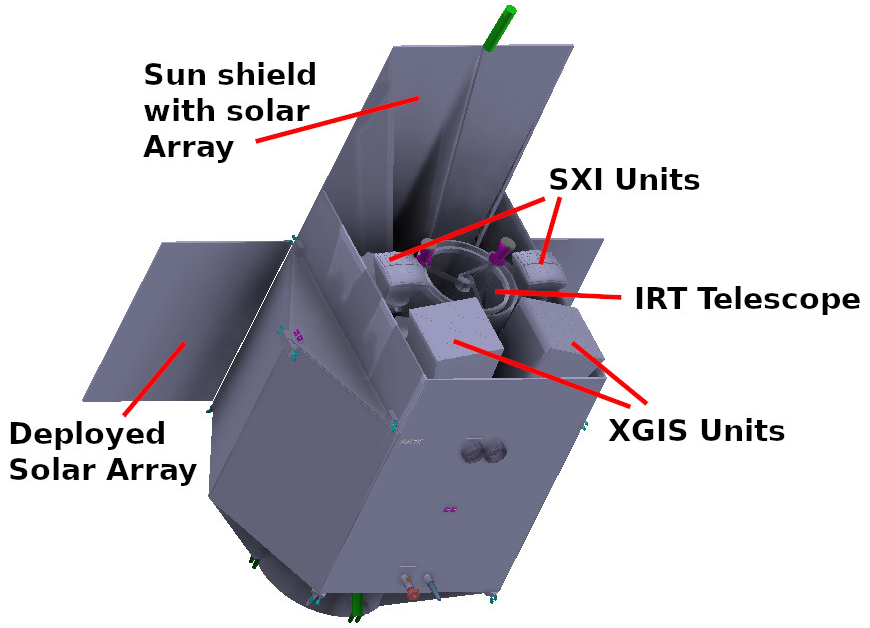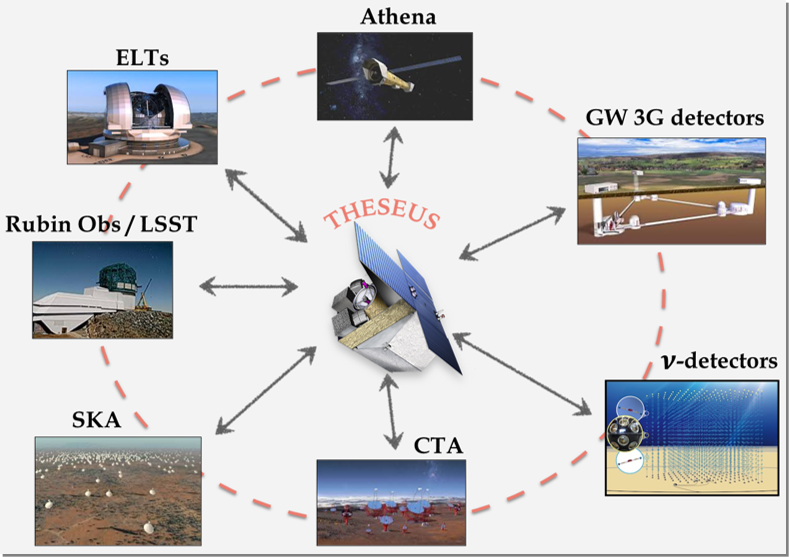THESEUS
PI: Lorenzo Amati
The THESEUS mission concept was proposed in response to the ESA call for medium-size mission (M5) within the Cosmic Vision Programme and selected by ESA on 2018 May 7 to enter an assessment phase study.
THESEUS is now being proposed to the ESA M7 program and is undergoing Phase 0 study.
The mission is designed to increase the discovery space of the high energy transient phenomena over the entirety of cosmic history. Its primary scientific goals are to explore the early universe by performing a census of the GRB population in the first billion years of the universe (cosmic dawn and reionization eras) and perform an unprecedented deep monitoring of the X-ray transient Universe. THESEUS will carry a unique payload providing a combination of wide and deep sky monitoring in a broad energy band (0.3 keV – 20 MeV), focusing capabilities in the soft X-ray band providing large grasp and high angular resolution, and on board near-IR capabilities for immediate transient identification and redshift determination.


Left: long gamma-ray bursts in the cosmological context (adapted from the NASA/WMAP team). Right: Estimated number of GRBs per red-shift that THESEUS will be able to detect in 3.5 years of operation.
- Soft X-ray Imager (SXI, 0.3 – 5 keV): 2 lobster-eye telescopes units, covering a total field of view (FOV) of ~0.5 sr with source location accuracy < 1-2’;
- InfraRed Telescope (IRT, 0.7 – 1.8 μm): a 0.7m class IR telescope with 15’x15’ FOV, for fast response, with both imaging and spectroscopy capabilities;
- X-Gamma rays Imaging Spectrometer (XGIS, 2 keV – 20 MeV): 2 coded-mask X/Gamma-ray cameras made up by Silicon Drift Detectors coupled with CsI crystal scintillator, granting a ~2sr FOV and a source location accuracy of ~10 arcmin in the 2-150 keV, as well as a >4sr FoV at energies >150 keV.
THESEUS will have a great synergy with the next generation of gravitational wave observatories (Einstein Telescope, LISA), X-ray satellites (Athena) and astroparticle experiments, playing a great role in the field of high energy and multimessenger astrophysics.


Left: A sketch of the THESEUS satellite (credits: ESA). Right: The many synergies between THESEUS and the next generation observatories that will be operative in the second half of the ’30s.
